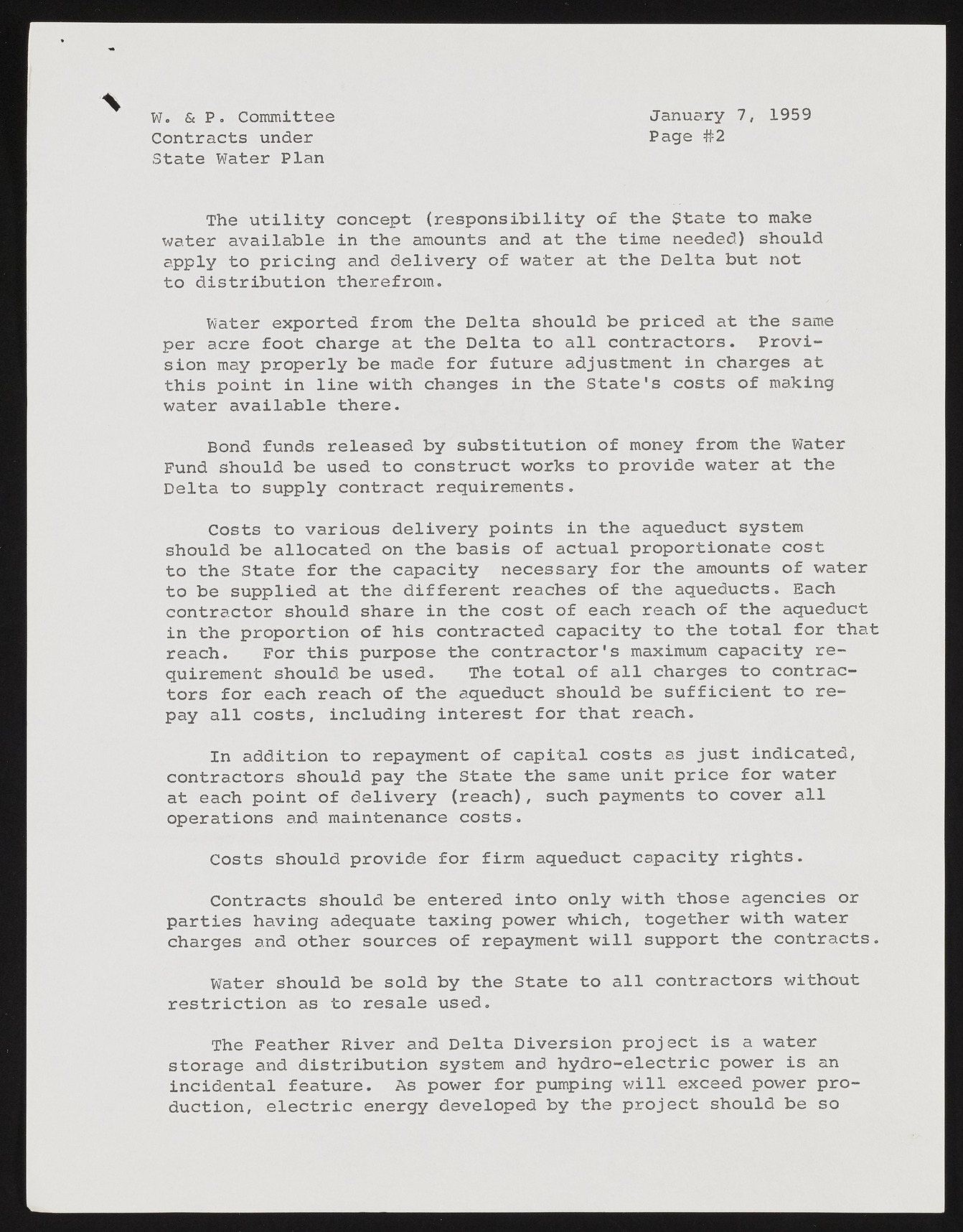Copyright & Fair-use Agreement
UNLV Special Collections provides copies of materials to facilitate private study, scholarship, or research. Material not in the public domain may be used according to fair use of copyrighted materials as defined by copyright law. Please cite us.
Please note that UNLV may not own the copyright to these materials and cannot provide permission to publish or distribute materials when UNLV is not the copyright holder. The user is solely responsible for determining the copyright status of materials and obtaining permission to use material from the copyright holder and for determining whether any permissions relating to any other rights are necessary for the intended use, and for obtaining all required permissions beyond that allowed by fair use.
Read more about our reproduction and use policy.
I agree.Information
Digital ID
Permalink
Details
Member of
More Info
Rights
Digital Provenance
Publisher
Transcription
W. & P. Committee Contracts under State Water Plan January 7, 1959 Page #2 % The utility concept (responsibility of the State to make water available in the amounts and at the time needed) should apply to pricing and delivery of water at the Delta but not to distribution therefrom. Water exported from the Delta should be priced at the same per acre foot charge at the Delta to all contractors. Provision may properly be made for future adjustment in charges at this point in line with changes in the State's costs of making water available there. Bond funds released by substitution of money from the Water Fund should be used to construct works to provide water at the Delta to supply contract requirements. Costs to various delivery points in the aqueduct system should be allocated on the basis of actual proportionate cost to the State for the capacity necessary for the amounts of water to be supplied at the different reaches of the aqueducts. Each contractor should share in the cost of each reach of the aqueduct in the proportion Of his contracted capacity to the total for that reach. For this purpose the contractor's maximum capacity requirement should be used. The total of all charges to contractors for each reach of the aqueduct should be sufficient to repay all costs, including interest for that reach. In addition to repayment of capital costs as just indicated, contractors should pay the State the same unit price for water at each point of delivery (reach), such payments to cover all operations and maintenance costs. Costs should provide for firm aqueduct capacity rights. Contracts should be entered into only with those agencies or parties having adequate taxing power which, together with water charges and other sources of repayment will support the contracts. Water should be sold by the State to all contractors without restriction as to resale used. The Feather River and Delta Diversion project is a water storage and distribution system and hydro-electric power is an incidental feature. As power for pumping will exceed power production, electric energy developed by the project should be so

